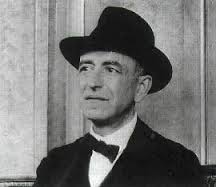
[ad_1]
Spaniards and Family tree, 2023
This Week in Classical Music: November 20, 2023. The Spaniards and a little bit of Family tree. Three Spanish composers had been born this week: Manuel de Falla, on November 23rd of 1876, Francisco Tárrega, on November 21st of 1852, and Joaquin Rodrigo, on November 21st of  1901. Falla might be a very powerful of the three – some may say a very powerful Spanish composer of the 20th century – though Tárrega was additionally instrumental in advancing Spanish classical music, which previous to the arrival of Tárrega and his mates Albéniz and Granados had been stagnant for a lot of a long time, virtually because the dying of Padre Antonio Soler in 1783. (It’s fascinating to notice that the Spanish missed out virtually utterly on symphonic music). Falla’s most fascinating works had been composed for the stage: the drama La Vida Breve, ballets El Amor Brujo and Three-Cornered Hat, the zarzuela (a Spanish style that includes arias, songs, spoken phrase, and dance) Los Amores de la Inés. A advantageous pianist, he additionally composed many items for the piano, Andalusian Fantasy amongst them. Tárrega’s most well-liked instrument was the guitar: he was a virtuoso participant, and he additionally composed principally for the instrument. (Tárrega had a novel guitar with a really massive sound, made by one Antonio Torres, a well-known luthier). Right here’s certainly one of his best-known items, Recuerdos de la Alhambra (Reminiscences of the Alhambra), carried out by Sharon Isbin.
1901. Falla might be a very powerful of the three – some may say a very powerful Spanish composer of the 20th century – though Tárrega was additionally instrumental in advancing Spanish classical music, which previous to the arrival of Tárrega and his mates Albéniz and Granados had been stagnant for a lot of a long time, virtually because the dying of Padre Antonio Soler in 1783. (It’s fascinating to notice that the Spanish missed out virtually utterly on symphonic music). Falla’s most fascinating works had been composed for the stage: the drama La Vida Breve, ballets El Amor Brujo and Three-Cornered Hat, the zarzuela (a Spanish style that includes arias, songs, spoken phrase, and dance) Los Amores de la Inés. A advantageous pianist, he additionally composed many items for the piano, Andalusian Fantasy amongst them. Tárrega’s most well-liked instrument was the guitar: he was a virtuoso participant, and he additionally composed principally for the instrument. (Tárrega had a novel guitar with a really massive sound, made by one Antonio Torres, a well-known luthier). Right here’s certainly one of his best-known items, Recuerdos de la Alhambra (Reminiscences of the Alhambra), carried out by Sharon Isbin.
Rodrigo additionally wrote principally for the guitar: his most well-known piece is Concierto de Aranjuez, from 1939, for the guitar and orchestra. Right here’s the concerto’s first motion; John Williams is the soloist; Daniel Barenboim leads the English Chamber Orchestra. The recording is sort of fifty years outdated, from 1974, however nonetheless sounds superb.
Wilhelm Friedemann Bach, Johann Sebastian’s eldest son and an exquisite composer in his personal proper, was born on November 22nd of 1710. Right here’s our entry about Wilhelm Friedemann from some years in the past. We sympathize with Friedemann: he was brooding, principally sad, and fairly unfortunate, however he wrote music that we discover superior to that of his rather more well-known brother, Carl Philipp Emanuel Bach. And right here’s an fascinating historic tidbit: certainly one of Wilhelm Friedemann’s harpsichord pupils was younger Sara Itzig, daughter of Daniel Itzig, a Jewish banker of Frederick II the Nice of Prussia. Daniel, one of many few Jews with full Prussian citizenship, had 13 kids; Sara was born in 1761. She was a superb keyboardist and commissioned and premiered a number of items by Wilhelm Friedeman and CPE Bach. Sara married Salomon Levy in 1783 and had an essential salon in Berlin. One among her sisters, Bella Itzig, married Levin Jakob Salomon; they’d a son, Jakob Salomon, who upon changing to Christianity, took the identify Bartholdy. His daughter Lea married Abraham Mendelssohn, son of the well-known Jewish thinker Moses Mendelssohn. Lea and Abraham had two kids, Felix and Fanny Mendelssohn; their full identify was Mendelssohn Bartholdy. Sara had a giant affect on the musical schooling of her grandnephew Felix. Bella gave a manuscript of Johann Sebastian Bach’s St Matthew Ardour to her grandson in 1824; Felix performed the primary 19th-century revival of the Ardour in 1829. So, there’s a line, fairly convoluted however fascinating, going from the Bach household to Felix (and Fanny) Mendelssohn. The Itzigs had been a exceptional household: along with all of the connections above, two different sisters, Fanny and Cecilie Itzig, had been patrons of Mozart. Possibly we’ll get to that sometime.
[ad_2]